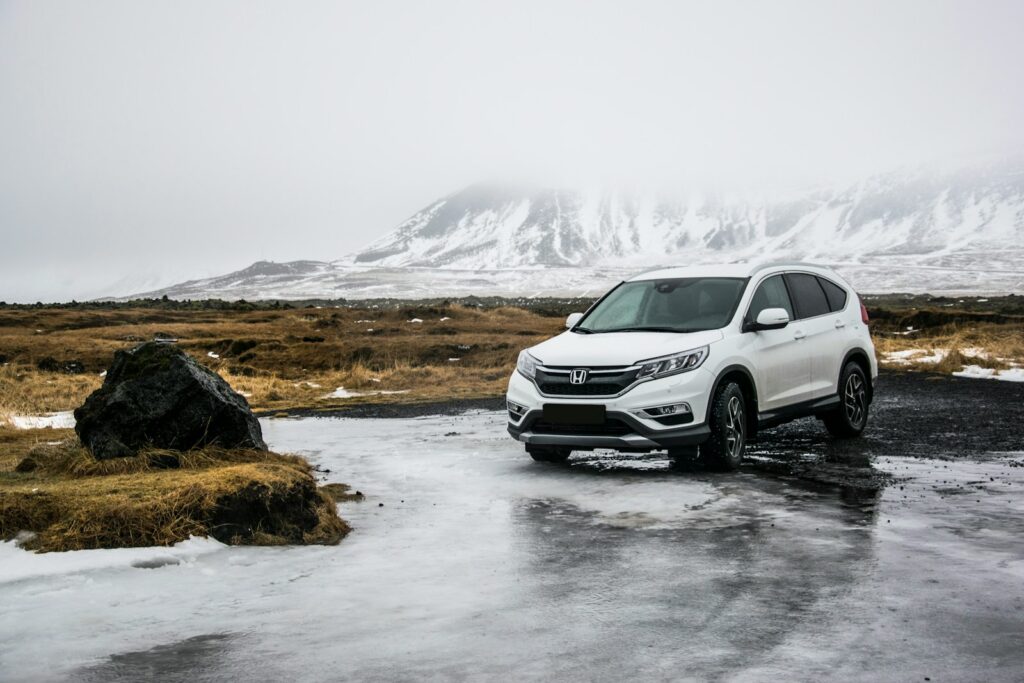
The family sedan has long been a cornerstone of American life, often serving as more than just a means of daily transport. For many, it’s the reliable vehicle that sees parents through commutes, transports children to school, and eventually gets passed down to a new driver, whether a teenager, a college student, or another family member. The best sedans distinguish themselves not merely by their initial comfort and efficiency, but by their inherent ability to endure, proving their worth over hundreds of thousands of miles, remaining safe, reliable, and affordable to maintain. These are the models that transcend their sticker price, becoming integral family staples.
However, the automotive landscape is not uniform, and not all sedans are engineered with the same promise of longevity. While some models are meticulously crafted to withstand the rigors of time and extensive use, others begin to show significant signs of wear and tear, developing costly problems and unreliable electronics just as their factory warranties conclude. These vehicles, initially alluring with their design or features, can quickly transform into financial burdens, built with cost-cutting measures or overly complex systems that simply cannot cope with real-world stresses over the long haul.
In this comprehensive guide, we delve into the world of sedans, separating the long-distance champions from those that falter prematurely. We will embark on a detailed exploration of specific models, beginning with those renowned for their enduring quality and mechanical soundness – vehicles practically designed to be handed down through generations. These are the cars that offer peace of mind, demonstrating that smart engineering and robust construction are the true hallmarks of lasting value in a family sedan.

1. **2012–2017 Toyota Camry**If the goal is to identify a sedan that can reliably serve a parent’s daily commute and then confidently take on a teenager’s initial driving years, the 2012–2017 Toyota Camry stands out as an exceptionally safe bet. Representing the seventh generation of the Camry’s well-established legacy, this particular model embodies all the core attributes for which Toyota is celebrated: remarkable long-term durability, minimal maintenance costs, and a mechanical design that prioritizes simplicity, making it exceptionally resilient to real-world wear and tear. Its widespread reputation as a “bulletproof” vehicle is well-earned.
Underpinning the Camry’s steadfast reliability are its robust engine choices. The 2.5L 4-cylinder engine (designated 2AR-FE) is particularly noteworthy for its near-legendary reputation, routinely surpassing 200,000 miles with only standard maintenance. Complementing this durable engine is a similarly tough 6-speed automatic transmission, a crucial detail given the absence of any problematic CVT worries in this generation. This combination ensures smooth, dependable power delivery without the common issues associated with more experimental transmission designs.
While the interior materials might be conservative, their durability is remarkably high. Seats resist wear, controls remain functional without peeling, and the touchscreen infotainment system, though basic, is notably free from complex electrical gremlins. Furthermore, its safety features, including standard stability control and good crash-test ratings, make it ideal for passing down, ensuring protection is not compromised. Toyota’s extensive network also simplifies finding affordable parts and repairs.
This particular Camry iteration is highlighted because it embodies the essence of a reliable family vehicle, one that parents can confidently entrust to their children. It is reliable, predictable, and remarkably forgiving of both age and inexperienced drivers. It avoids tempting excessive speed and, crucially, will not leave its occupants stranded on the roadside if it has received even modest care, proving its enduring value for every owner it serves.
Car Model Information: 2024 Toyota Camry LE
Name: Toyota Camry
Caption: 2018 Toyota Camry Ascent (ASV70, Australia)
Manufacturer: Toyota
Production: March 1982 – present
Aka: ubl
Class: ubl
Layout: ubl
Predecessor: ubl
Successor: Toyota Avensis (T250)
Categories: 1990s cars, 2000s cars, 2010s cars, 2020s cars, All-wheel-drive vehicles
Summary: The Toyota Camry (; Japanese: トヨタ・カムリ Toyota Kamuri) is an automobile sold internationally by the Japanese auto manufacturer Toyota since 1982, spanning multiple generations. Originally compact in size (narrow-body), the Camry has grown since the 1990s to fit the mid-size classification (wide-body)—although the two widths co-existed in that decade. Since the release of the wide-bodied versions, Camry has been extolled by Toyota as the firm’s second “world car” after the Corolla. As of 2022, the Camry is positioned above the Corolla and below the Avalon or Crown in several markets.
In Japan, the Camry was once exclusive to Toyota Corolla Store retail dealerships. Narrow-body cars also spawned a rebadged sibling in Japan, the Toyota Vista (トヨタ・ビスタ)—also introduced in 1982 and sold at Toyota Vista Store locations. Diesel fuel versions have previously retailed at Toyota Diesel Store. The Vista Ardeo was a wagon version of the Vista V50.
Get more information about: Toyota Camry
Buying a high-performing used car >>>
Brand: Toyota Model: Camry
Price: $24,500 Mileage: 37,074 mi.
Read more about: 15 Classic Wagons Families Don’t Want: Why Next-Gen Parents Pass on These Road Icons
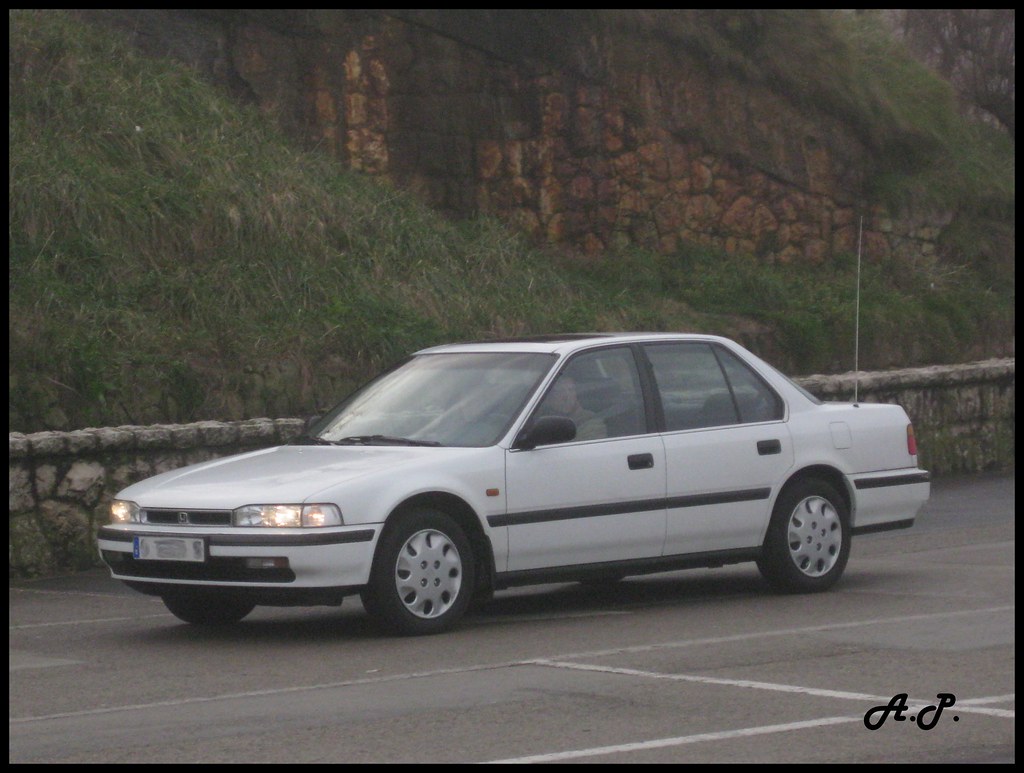
2. **2011–2016 Honda Accord**The 2011–2016 Honda Accord justly earns its spot on our list, presenting a compelling combination of reliability, strong performance, and practical utility. This generation consistently delivers a satisfying driving experience that impressively holds its own even after years of continuous use and substantial mileage. Owners frequently report these vehicles performing without significant complaint, often well beyond 150,000 miles, making them a testament to Honda’s engineering prowess and commitment to long-term durability.
Central to this generation’s reputation for endurance is the 2.4L 4-cylinder engine (K24 series), a true workhorse celebrated for its durability and fuel efficiency. It routinely exceeds 250,000 miles with regular maintenance. Its design incorporates timing chains rather than belts, along with smooth-shifting transmissions and resilient cooling systems, all contributing to keeping the car reliably on the road long after initial financing has been settled. The optional 3.5L V6 also provides more power without sacrificing longevity.
Inside, the Accord reveals a cabin constructed to a noticeably higher standard than many of its direct midsize competitors. The interior is spacious, ergonomic, and exceptionally durable. Even after a decade, buttons retain their click, leather seats resist major wear, and dashboard materials consistently avoid common crumbling or fading. Excellent outward visibility and a well-optimized driving position make this Accord an especially astute choice for new or less experienced drivers, enhancing safety and comfort.
One of the most highly valued characteristics of this specific Accord generation is its remarkable consistency. It is notably free from any major systemic weak points like problematic sensors or infamous oil consumption issues. Routine maintenance procedures are straightforward, parts are readily available and inexpensive, and most independent mechanics possess extensive familiarity with this model. This makes it a vehicle genuinely capable of adapting and growing with a family, seamlessly transitioning from daily commuting to a dependable first car.
Car Model Information: 2020 Honda Accord Sport 1.5T
Name: Honda Accord
Caption: 2023 Honda Accord LX (US)
Alt: Front three-quarter view of a front-engined four-door car.
Manufacturer: Honda
Production: 1976–present
Class: Compact car
BodyStyle: hatchback
Layout: Front-engine, front-wheel-drive layout
Predecessor: Honda 1300
Categories: 1980s cars, 1990s cars, 2000s cars, 2010s cars, 2020s cars
Summary: The Honda Accord (Japanese: ホンダ・アコード, Hepburn: Honda Akōdo; ), also known as the Honda Inspire (Japanese: ホンダ・インスパイア, Hepburn: Honda Insupaia) in Japan and China for certain generations, is a series of automobiles manufactured by Honda since 1976, best known for its four-door sedan variant, which has been one of the best-selling cars in the United States since 1989. The Accord nameplate has been applied to a variety of vehicles worldwide, including coupes, station wagons, hatchbacks and a Honda Crosstour crossover.
Get more information about: Honda Accord
Buying a high-performing used car >>>
Brand: Honda Model: Accord
Price: $21,761 Mileage: 76,820 mi.
Read more about: Decoding Used Car Regrets: Mechanics’ Blacklist Picks and Essential Pitfalls to Avoid for Smart Buyers

3. **2010–2014 Subaru Legacy (Non-Turbo)**For families in search of a sedan that not only offers steadfast reliability but also masterfully handles challenging weather conditions with remarkable ease, the 2010–2014 Subaru Legacy, specifically its non-turbocharged models, emerges as a truly outstanding selection. This generation boasts standard all-wheel drive, a well-deserved reputation for exceptional mechanical durability—particularly with the 2.5L non-turbo engine—and an interior cabin meticulously designed to withstand the demands of everyday family life. These attributes collectively position the Legacy as a quintessential family car for the long haul.
At the heart of this Legacy’s dependable performance is its 2.5L naturally aspirated flat-four engine (EJ25). This powerplant is simple, efficient, and highly dependable when subjected to proper, consistent maintenance. Paired with either a manual or a continuously variable transmission (CVT), it delivers ample power for daily driving. While earlier CVT models presented some initial concerns, models produced from 2012 onwards benefited from improved designs that have demonstrated impressive resilience and longevity, especially with adherence to regular fluid changes.
What truly distinguishes the Subaru Legacy is its signature standard all-wheel drive system. This feature makes it an unequivocally ideal choice for families residing in regions frequently affected by snow, heavy rain, or challenging road conditions. The all-wheel drive system instills a profound sense of confidence across all seasons, effectively negating the perceived necessity of owning a bulkier SUV solely for winter driving capabilities. Despite its advanced AWD hardware, the Legacy remarkably manages to offer competitive fuel economy figures and maintains a comfortably composed ride.
Inside the cabin, Subaru’s design philosophy squarely focused on ultimate function rather than fleeting flair. Controls are simple and robust, outward visibility is excellent, and even base models were generously equipped with practical features like Bluetooth and heated seats, alongside strong crash safety ratings. The interior materials, though perhaps not overtly luxurious, are engineered for enduring resilience, perfectly suited for a vehicle expected to house years of family memories. The 2010–2014 Legacy hits the sweet spot between reliability, practicality, and real-world versatility, proving its value year after year.
Car Model Information: 2021 Subaru Legacy
Name: Subaru Legacy
Caption: 2020 Subaru Legacy (United States)
Manufacturer: Subaru
Aka: Isuzu Aska
Production: 1989–2020 (worldwide),1989–2025 (North America)
Assembly: Ōta, Gunma
Class: Mid-size car
BodyStyle: Sedan (automobile)
Layout: Front-engine, front-wheel-drive
ModelYears: 1990–2025 (North America)
Categories: 1990s cars, 2000s cars, 2010s cars, 2020s cars, All-wheel-drive vehicles
Summary: The Subaru Legacy (Japanese: スバル・レガシィ, Hepburn: Subaru Regashi) is a mid-size car built by Japanese automobile manufacturer Subaru from 1989 to 2025. The maker’s flagship car, it is unique in its class for offering all-wheel drive as a standard feature, and Subaru’s traditional boxer engine.
In 1996, a variant of the Legacy with heightened suspension called the Legacy Outback was introduced to compete in the burgeoning sport-utility vehicle class, and proved to be a sales success for Subaru. The Outback line was split into its own model in 2008, known as the Subaru Outback.
As of 2008, 3.6 million Legacy models have been built since its 1989 introduction.
Production of the Legacy ended in Japan in June 2020, with the sixth-generation Legacy being the last model produced and marketed in Japan. Subaru of America announced in an internal email that 2025 will be the last model year for the Subaru Legacy. The Subaru Outback will remain in production, after being the company’s top selling model in 2023.
The Legacy was sold as the Liberty in Australia out of deference to Legacy Australia, an organisation dedicated to caring for the families of military service veterans.
Get more information about: Subaru Legacy
Buying a high-performing used car >>>
Brand: Subaru Model: Legacy
Price: $15,999 Mileage: 98,700 mi.
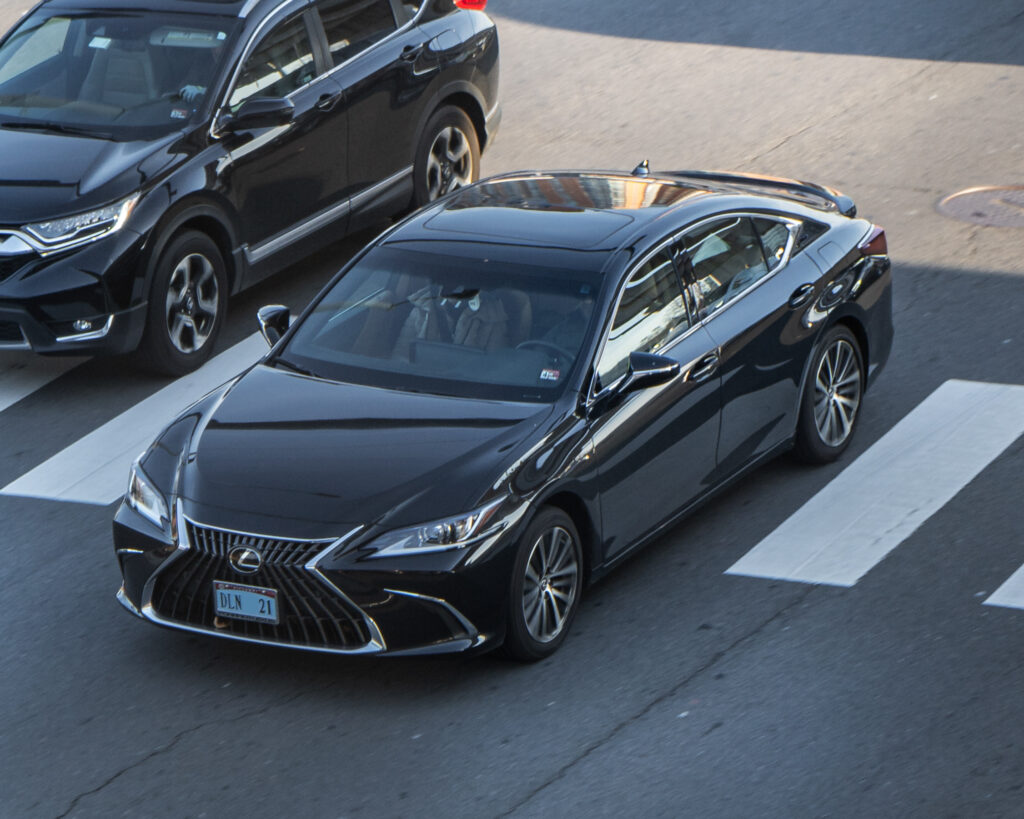
4. **2009–2015 Lexus ES 350**When the thought of a car designed for multi-generational ownership crosses one’s mind, the immediate image may not typically be that of a luxury sedan. However, the 2009–2015 Lexus ES 350 powerfully challenges and ultimately shatters this conventional stereotype. This Lexus is not engineered around ostentatious performance or delicate, often expensive, high-end features. Instead, its core identity is built upon a foundation of refined comfort, unimpeachable rock-solid reliability, and profound mechanical simplicity, all elegantly enveloped within a distinctly upscale package. These attributes elevate it to one of the most commendably pass-down-worthy sedans.
Powering the ES 350 is the highly regarded 3.5L V6 engine (2GR-FE), an identical powerplant found in numerous other dependable Toyota models. This engine enjoys widespread acclaim for its near-bulletproof reliability, effortlessly achieving and often surpassing 250,000 miles with nothing more than adherence to basic, routine maintenance schedules. It operates with remarkable smoothness and quietness, providing ample power without feeling strained. Paired with an equally dependable 6-speed automatic transmission, this drivetrain configuration stands as one of the most low-maintenance and worry-free setups in the luxury segment.
The Lexus ES 350 truly distinguishes itself and shines brightly in the overall ownership experience. The interior cabin is constructed to an exceptionally high standard, featuring soft-touch materials, genuine wood trim, and high-quality switches that retain their tactile integrity even after a full decade. The seats are plush and supportive, while the cabin consistently maintains a hushed tranquility. Thoughtful features like dual-zone climate control, navigation, and optional Mark Levinson audio enhance every drive, imbuing it with a special, premium feel, irrespective of the car’s chronological age.
Remarkably, despite its luxurious appointments, the ES 350 does not impose an exorbitant cost of ownership. It runs efficiently on regular fuel, avoids complex air suspension or turbos, and shares many parts with the Toyota Camry, significantly reducing repair and maintenance costs. This Lexus offers genuine luxury entirely devoid of long-term liability, ensuring it can be passed down without becoming a financial burden. Even with high mileage, these cars tend to feel and drive like they’re barely broken in, proving their superior engineering.
Car Model Information: 2020 Jeep Wrangler Sport
Name: Lexus ES
Caption: Lexus ES 350 (GSZ10)
Manufacturer: Toyota
Aka: unbulleted list
Production: June 1989 – present
Class: unbulleted list
BodyStyle: unbulleted list
Layout: unbulleted list
ModelYears: 1990–present
Categories: 1990s cars, 2000s cars, 2010s cars, 2020s cars, All-wheel-drive vehicles
Summary: The Lexus ES is a mid-size luxury sedan marketed since 1989 by Lexus, the luxury division of Toyota, across multiple generations, each offering V6 engines and a front-engine, front-wheel-drive layout. The first five generations of the ES used the Toyota Camry platform, while the latter generations are more closely related to both the Camry and the Avalon. Manual transmissions were offered until 1993, a lower-displacement inline-four engine became an option in Asian markets in 2010, and a gasoline-electric hybrid version was introduced in 2012. The ES was Lexus’s only front-wheel drive vehicle until 1998, when the related RX was introduced, and the sedan occupied the entry-level luxury car segment of the Lexus lineup in North America and other regions until the debut of the IS in 1999. The ES name stands for “Executive Sedan”. However, some Lexus importers use the name, “Elegant Sedan”.
Introduced in 1989, the first generation ES 250 was one of two vehicles in Lexus’s debut range, along with the LS 400. The second generation ES 300 debuted in 1991, followed by the third generation ES 300 in 1996, and the fourth generation ES 300/330 in 2001. The first- through fourth generation sedans shared body styling elements with Japan-market Toyota sedans, and a domestic market equivalent, the Toyota Windom (Japanese: トヨタ・ウィンダム, Toyota Windamu), was sold until the launch of the fifth generation ES in 2006. The word “Windom” is a combination of “win” and the suffix “dom” expresses a state of perpetual victory. The fifth generation ES used body styling marketed by Lexus as L-finesse and debuted in early 2006 as a 2007 model. The sixth generation ES debuted in the first half of 2012 as a 2013 model, and features increased cabin dimensions due to a longer wheelbase which is shared with the full-size XX40 series Avalon.
Lexus has positioned the ES in the comfort luxury segment, with an emphasis on interior amenities, quietness, and ride quality, in contrast with more firm-riding sport sedans. Buyers seeking more performance-focused models are targeted by the Lexus IS and rival makes, with such models offering a sportier drive with differently tuned suspensions. In Europe, Japan and other markets where it was not available until the seventh generation model, the GS sport sedans occupy the mid-size category in the Lexus lineup until it was cancelled August 2020. In the United States, the ES has been the best-selling Lexus sedan for over fifteen years.
Get more information about: Lexus ES
Buying a high-performing used car >>>
Brand: Lexus Model: ES 350
Price: $25,000 Mileage: 54,707 mi.
Read more about: Your Definitive Guide to Choosing the Right Family SUV for 2025: Safety, Value, and Performance Unpacked

5. **2012–2018 Mazda6**The 2012–2018 Mazda6 serves as compelling evidence that a reliable, pass-down-worthy sedan does not, by any stretch, have to be a boring one. Celebrated for its impressively sharp handling dynamics, sleek and contemporary design aesthetics, and fundamentally dependable mechanical systems, this specific generation of the Mazda6 masterfully delivers both a genuinely enjoyable driving experience and substantial long-term value. These qualities collectively position it as an unequivocal top choice for families aiming to keep a single vehicle in active circulation for a considerable number of years.
A cornerstone of this model’s enduring appeal and reliability is Mazda’s innovative 2.5L Skyactiv-G engine. This naturally aspirated engine is fuel-efficient and surprisingly responsive, and crucially, exceptionally reliable. When competently paired with either the smooth 6-speed automatic or the engaging manual transmission, this powertrain has demonstrated remarkable durability with diligent routine maintenance. It is common for owners to report reaching well past 200,000 miles without necessitating any major mechanical repairs, a testament to its robust engineering.
While some earlier Mazda models faced criticisms regarding potential rust issues or dated interiors, the 2012–2018 Mazda6 marked a pivotal turning point. Build quality dramatically improved, the cabin featured enhanced soft-touch materials and modern technological elements, and the design, both inside and out, continues to hold up aesthetically today. For a mid-size sedan, it confidently offers a refined sense of style without incurring the prohibitive cost or the added mechanical complexity often associated with luxury rivals, delivering premium appeal at a practical price point.
What renders the Mazda6 particularly attractive for extended, long-term use is its inherent drivability. It is genuinely engaging and fun to drive, characterized by its responsive steering feel and a composed chassis that transforms even mundane daily commuting into a more enjoyable and spirited activity. For newer drivers, it offers a rewarding and confidence-inspiring driving experience while simultaneously remaining unequivocally safe, economically sensible, and profoundly practical. It checks all the right boxes: reliable, stylish, affordable, and enjoyable, proving that you can appreciate the journey without the cost of breakdowns and repairs.
Not all sedans are built for the long haul. While many promise comfort, performance, and efficiency when new, a surprising number of them begin to unravel just after their factory warranties expire, leaving owners to deal with expensive repairs, unreliable electronics, and premature mechanical failures. These models may look promising at first, but under the surface, they’re ticking time bombs—often built with cost-cutting parts or overly complex systems that don’t hold up under real-world stress.
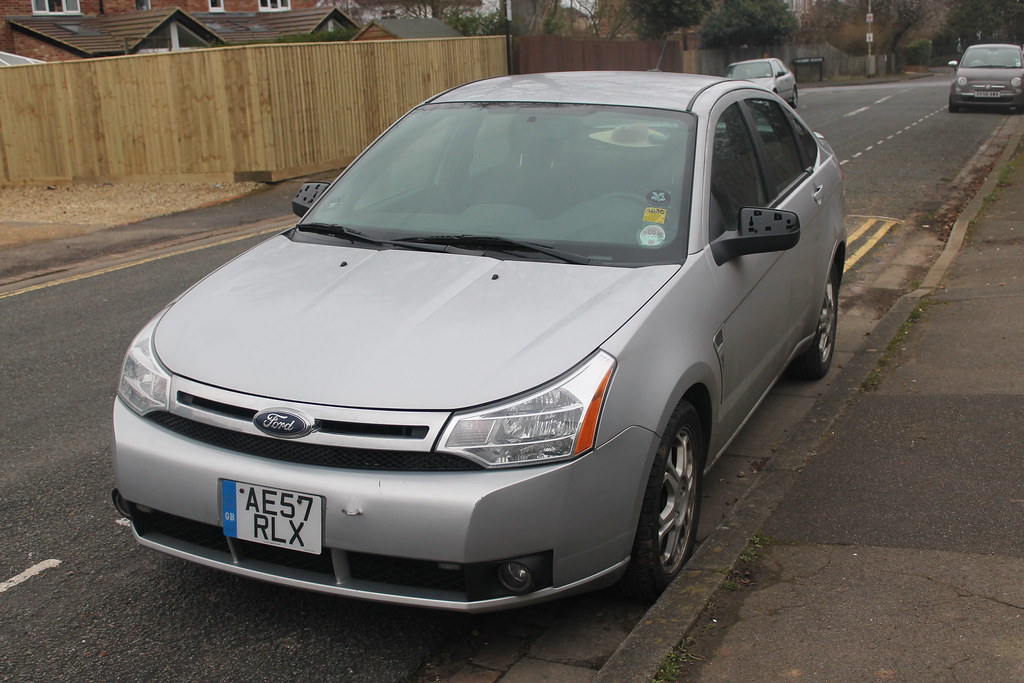
**6. 2011–2015 Ford Focus (Automatic Transmission Models)**
The 2011–2015 Ford Focus was supposed to be Ford’s answer to compact-car dominance—a stylish, fuel-efficient sedan with European handling and a premium feel. On the surface, it delivered with sleek styling, sharp road manners, and strong initial reviews, making it appear like a budget-friendly sedan that could go the distance. However, hidden under the hood was a fatal flaw: the PowerShift dual-clutch automatic transmission.
Marketed as an innovative fuel-saving technology, the PowerShift transmission was designed to feel like a manual with the convenience of an automatic. Unfortunately, it was plagued by hesitation, shuddering, slipping, jerky gear changes, and premature wear, often starting within the first 30,000 miles and growing worse over time. Ford issued numerous technical service bulletins and software updates, but these never fully solved the underlying mechanical problems.
While still under warranty, owners could have clutches and modules replaced, sometimes multiple times. But once out of warranty, the Focus often became a money pit, with transmission repairs costing $2,000–$4,000—often more than the car’s resale value. For a first-time buyer or a family hoping to keep a sedan long-term, it might seem like a great value until the transmission fails, making the car either too expensive to repair or too broken to sell.
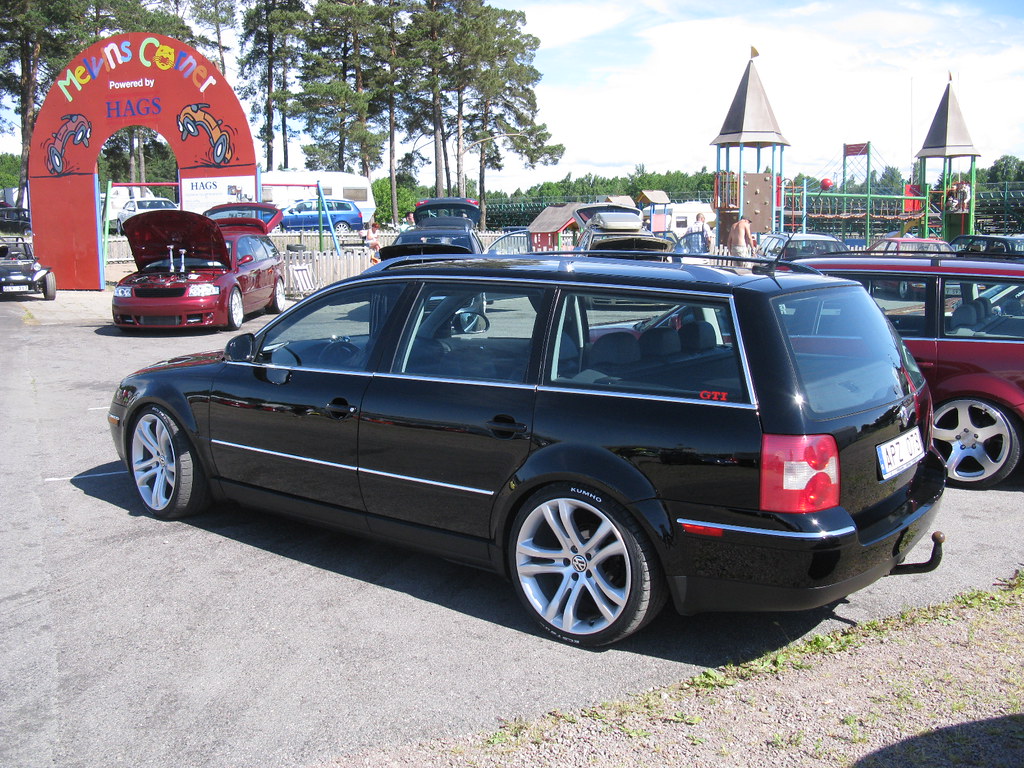
**7. 2012–2016 Volkswagen Passat 1.8T / 2.0T**
At launch, the 2012–2016 Volkswagen Passat seemed like a slam dunk, boasting the clean, understated styling VW was known for, a spacious interior that rivaled midsize competitors, and a turbocharged engine lineup offering peppy performance with solid fuel economy. While its design and driving experience won early praise, the mechanical reality often started to crumble just outside the warranty window, particularly for models powered by the 1.8T and 2.0T EA888 turbocharged engines.
The primary issue lies in the engine’s reliability and its supporting systems. These turbocharged engines frequently suffer from a variety of long-term flaws including timing chain tensioner failures, oil consumption, coolant leaks, failing PCV valves, and turbocharger failures. Many of these issues typically begin around 60,000–80,000 miles, conveniently just after powertrain warranties expire. For instance, a failed timing chain tensioner can result in catastrophic engine damage, costing more than the car’s value to repair.
Adding insult to injury, the automatic transmission (Tiptronic and DSG models) isn’t bulletproof either. DSG-equipped models require strict service intervals, and missed maintenance can lead to rough shifting or mechatronic unit failures. Even with good service history, owners frequently report hesitation, clunking, or early transmission wear in higher-mileage examples. In the used market, these cars are often cheap for a reason; without meticulous care and service records, most become expensive repair projects or parts donors, making far better long-term options available for budget-minded drivers or families.

**8. 2013–2017 Nissan Altima (2.5L CVT Models)**
The 2013–2017 Nissan Altima is a familiar sight on American roads, and it’s easy to understand its popularity, offering roomy seating, decent fuel economy, and a smooth ride, all at an affordable price. The 2.5L 4-cylinder engine appeared solid on paper, and the Altima’s styling took a more premium turn during this generation. However, beneath that sleek exterior was a major problem: the Continuously Variable Transmission (CVT).
Nissan’s CVTs during this era were notoriously fragile. Drivers reported a long list of issues starting around 60,000–80,000 miles, just outside the powertrain warranty window, including shuddering, slipping, delayed engagement, overheating, and complete failure, often with little warning. The problem was so widespread that Nissan extended the CVT warranty on some models, but many owners were still left footing the bill for a $3,500+ transmission replacement.
Beyond the transmission, the Altima wasn’t as rock-solid as its rivals in other key areas. Interior quality often declined sharply after a few years, with dash components warping, door handles breaking, and upholstery wearing out faster than expected. Electrical gremlins, such as failing push-button start systems and faulty power windows, became common as these cars aged. For drivers expecting to keep their sedan past 100,000 miles, or hand it off to a new driver, it’s a gamble that too often ends in frustration.
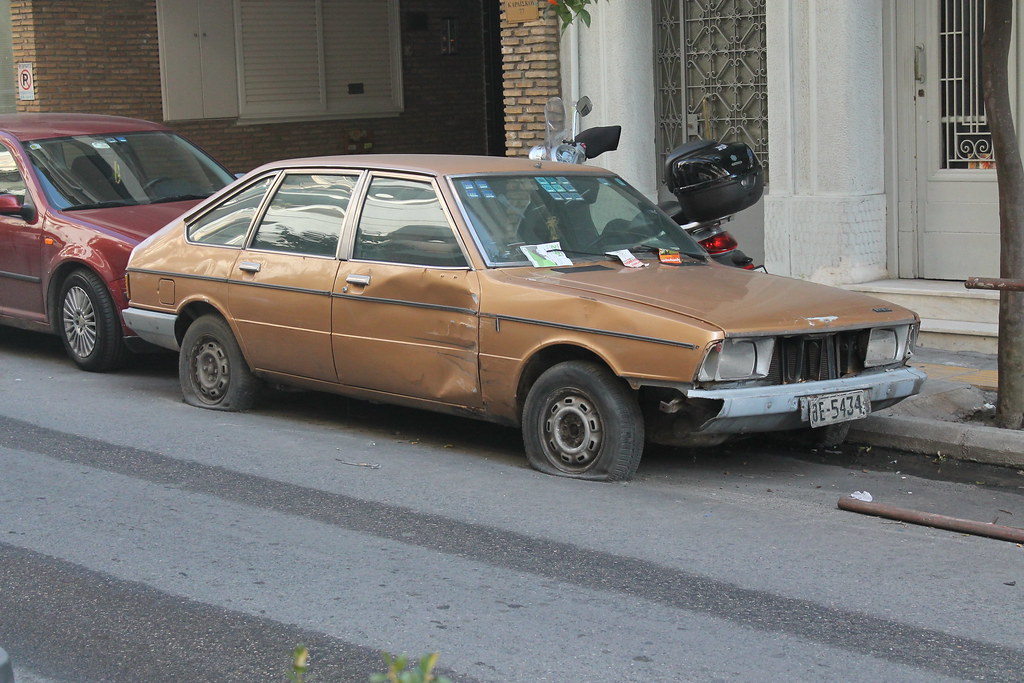
**9. 2015–2019 Chrysler 200 (Especially 2.4L FWD Models)**
The 2015–2019 Chrysler 200 was introduced with big ambitions, featuring sleek, coupe-like styling, a tech-laden interior, and a modern platform shared with Alfa Romeo and Fiat. With standard features like push-button start, a rotary gear selector, and available all-wheel drive, it positioned itself as a premium contender in the midsize sedan segment. Unfortunately, beneath the upscale appearance was a car that often struggled to survive beyond its warranty, especially in base 2.4L front-wheel-drive models.
The 2.4L “Tigershark” 4-cylinder engine may sound aggressive, but it’s known for excessive oil consumption, poor reliability, and frequent stalling issues. Owners report that these engines can consume a quart of oil every 1,000 miles, or worse, well before 80,000 miles. If not caught in time, low oil levels lead to engine failure, often with no warning lights, leaving many owners stuck with massive repair costs despite Chrysler issuing technical service bulletins.
Then there’s the 9-speed automatic transmission, one of the 200’s most touted features, developed by ZF to offer fuel economy and performance benefits. In reality, it proved to be one of the most criticized transmissions of the decade, suffering from rough shifting, gear hunting, software glitches, and outright failure with no clear fix aside from replacement. Ultimately, the 200 became such a reliability liability that Chrysler discontinued it entirely by 2017, a rare admission of defeat in a crowded market.
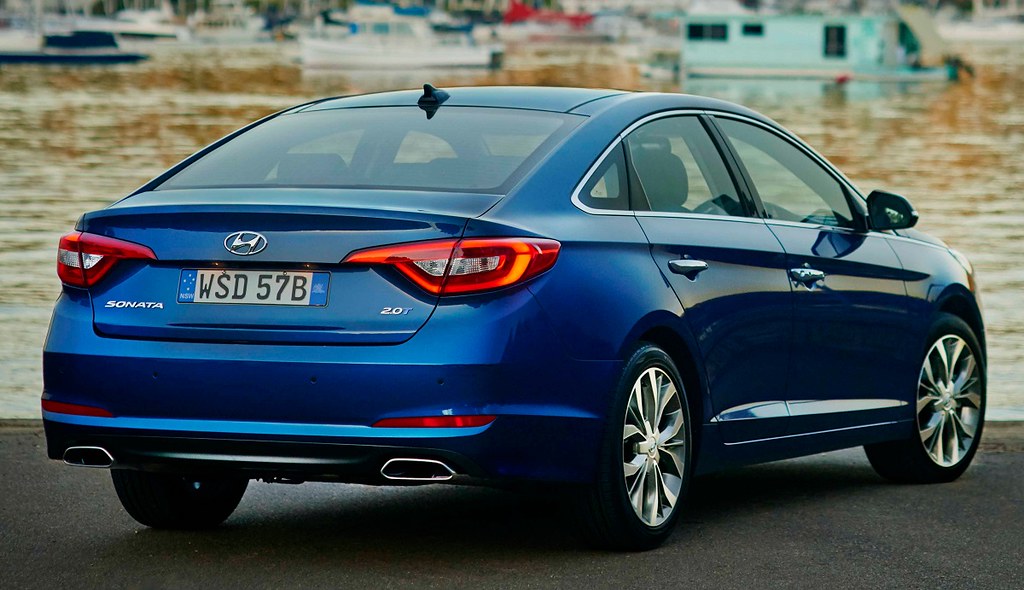
**10. 2011–2014 Hyundai Sonata (2.4L GDI Engine)**
The 2011–2014 Hyundai Sonata was a game-changer at launch, boasting a sleek, modern design, strong fuel economy, and a roomy interior, all at a price that undercut its rivals. It quickly became one of Hyundai’s best-selling sedans and was widely praised for giving buyers more for less. However, as the miles added up and warranties expired, so did the initial goodwill, as beneath the surface, this Sonata hid a serious flaw: engine failure due to poor internal design and manufacturing issues.
The culprit is the 2.4L GDI (Gasoline Direct Injection) engine, which suffered from premature bearing wear, piston skirt damage, and debris left inside the engine during assembly. These flaws led to engine knocking, oil starvation, and in worst cases, complete engine seizure. Although Hyundai eventually extended warranties and offered some recalls, many owners were left in limbo, stuck with expensive repairs or total engine replacements if they were outside of program terms or failed to catch the issue in time.
Compounding the problem was the fact that symptoms often appeared after the standard 60,000-mile powertrain warranty, especially for second-hand buyers unaware of the risk. A failed engine typically cost between $4,000 and $6,000 to replace, often totaling out the vehicle entirely. If you’re considering one secondhand, it is crucial to check the VIN for recall work and be prepared for a potential engine replacement—or better yet, walk away.
**Understanding Electrical Problems and Extended Warranty Coverage**
Taking up automobile ownership comes with a lot of duties and unavoidable uncertainty. Even with the advances in automobile technology that have given our cars sophisticated electrical systems for increased comfort and safety, electrical problems can still arise. When the manufacturer’s warranty on your automobile is about to expire, you should seriously consider getting an extended warranty to protect yourself from unanticipated repair costs. However, one of the most frequent questions that remain in the minds of automobile owners is whether an extended warranty covers electrical issues. This post seeks to address this question by shedding light on what to expect in terms of electrical problem coverage under extended warranties.
It is crucial to recognize frequent concerns that may develop to completely understand electrical issues. These might involve problems with the car’s starting motor, alternator, or battery. In addition, faulty wiring, broken sensors, and issues with the onboard computer system are common. Car owners may identify symptoms and seek prompt care by having a foundational understanding of these prevalent factors.
An extended warranty is a crucial factor when it comes to protecting your car against unanticipated repair bills, particularly when the original manufacturer’s guarantee is about to expire. Knowing how extended warranties handle electrical issues is essential for making well-informed decisions. Extended warranties, which are intended to protect beyond the original manufacturer guarantee period, differ in their coverage.
Extended warranties usually cover a wide range of components, while precise coverage varies across plans and providers. The type of warranty selected and the terms and conditions of the plan will frequently determine the amount of coverage for electrical concerns. An extra layer of security against the possible expenses of fixing or replacing these important parts is provided by the fact that many extended warranties do cover electrical parts like wiring, alternators, and starter motors. Car owners must, however, carefully read the terms of the extended warranty agreement. Certain plans could contain restrictions or exclusions related to wear and tear, certain electrical components, or pre-existing conditions. To prevent unpleasant shocks when a repair is necessary, it is essential to comprehend these subtleties. The length and mileage restrictions of extended warranties should also be taken into account since they establish the time frame for which the coverage is valid.
When it comes to sedans, looks, features, and a low monthly payment can be deceiving. As we’ve seen, the true test of a sedan isn’t how it drives off the lot—it’s how it holds up after years of real-world use. The difference between a car that can be confidently passed down and one that becomes a money pit often lies in the choices made deep in its engineering: the reliability of the drivetrain, the quality of materials, and the manufacturer’s long-term support strategy.
Sedans like the Toyota Camry, Honda Accord, Subaru Legacy, Lexus ES 350, and Mazda6 weren’t just built to satisfy during a test drive—they were built to endure. These cars prove their worth over time, outlasting trends and newer tech-laden models. Their reputation for durability, ease of maintenance, and mechanical simplicity makes them ideal for hand-me-down duty, continuing to serve families reliably long after the first owner.
Car Model Information: 2018 Mazda Mazda6 Signature
Name: Mazda6
Manufacturer: Mazda
Aka: Mazda Atenza (Japan and China, 2002–2019)
Production: February 2002 – December 2024
Class: Mid-size car
Layout: Front-engine, front-wheel-drive,Front-engine, all-wheel-drive
Predecessor: Mazda Capella,Mazda Xedos 6
Successor: Mazda EZ-6
Categories: 2010s cars, 2020s cars, All-wheel-drive vehicles, All articles with unsourced statements, Articles containing Japanese-language text
Summary: The Mazda 6 (Japanese: マツダ・シックス, Hepburn: Matsuda Shikkusu) (known as the Mazda Atenza in Japan, derived from the Italian attenzione) is a mid-size sedan produced by Mazda since 2002, replacing the long-produced Capella/626.
The Mazda6 was marketed as the first example of the company’s “Stylish, Insightful and Spirited” design philosophy, followed by the Mazda2 in December 2002, the RX-8 in August 2003, the Mazda3 in January 2004, the Mazda5 in the summer of 2005, the MX-5 in October 2005, and the CX-7 in November 2006. The 2003 Mazda6 is essentially the seventh-generation Mazda 626, part of the ‘G’ model code family.
Get more information about: Mazda6
Buying a high-performing used car >>>
Brand: Mazda Model: Mazda6
Price: $21,991 Mileage: 38,724 mi.
On the other hand, sedans like the Ford Focus, Volkswagen Passat, Nissan Altima, Chrysler 200, and Hyundai Sonata (GDI) remind us that flashy design and new technology can mask deep reliability issues. Many of these vehicles suffer from transmission failures, oil-burning engines, poor build quality, or software bugs that surface right after warranties expire—transforming a budget-friendly purchase into an ownership nightmare. The lesson here is simple but vital: if you’re buying a sedan with the intention of keeping it for the long haul—or handing it down to the next driver in your family—choose substance over style, and track record over trendiness. In the end, your best long-term bet isn’t the car that impresses you in the showroom—it’s the one that still runs strong after ten years, with no warning lights and no drama. That’s the sedan worth investing in—and passing on.

